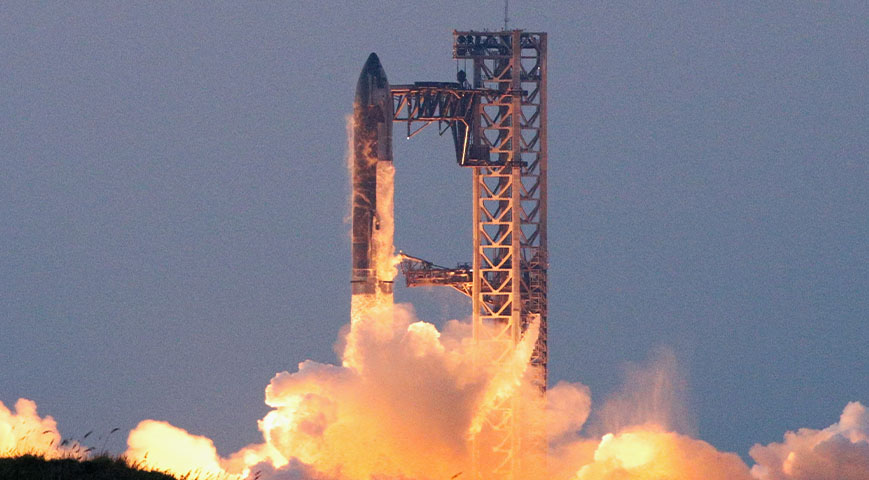SpaceX achieved a significant milestone with the triumphant return of its Starship rocket's first-stage booster during Sunday's fifth test flight.
The booster, known as "Super Heavy," was lifted from SpaceX's Boca Chica, Texas facility at 7:25 a.m. CT (1225 GMT) and soared to an altitude of approximately 70 km (40 miles). After separating from the second-stage Starship, the booster returned to the launch site.

In a groundbreaking maneuver, the 233-foot-tall Super Heavy booster reignited three Raptor engines to guide its return. Two giant mechanical arms attached to a towering 400-foot launch tower caught it mid-air, marking a key achievement for SpaceX’s goal of building reusable rockets.
Elon Musk celebrated the accomplishment on X, formerly Twitter, exclaiming, “The tower has caught the rocket!”
The test flight also involved the Starship’s second stage, which reached speeds of 17,000 mph at an altitude of 89 miles. It performed a controlled descent over the Indian Ocean near Western Australia, demonstrating improved heat resistance with 18,000 upgraded heat-shield tiles, following challenges from previous test flights.

Starship re-entered Earth's atmosphere while enveloped in glowing plasma and successfully ignited one of its engines to simulate a splashdown.
Upon touchdown in the ocean, the rocket toppled over and later exploded into a fireball, although it was unclear if this was planned or due to a malfunction.
Musk confirmed that the Starship hit its precise landing target. This test is a critical step toward SpaceX’s long-term mission to send humans to the moon, Mars, and beyond using fully reusable rockets.









